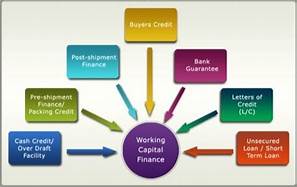What is the objective of working capital management?
What is working capital?
Working capital is the difference between a company’s assets and liabilities. It is a financial measure that calculates whether a company has enough liquid assets to pay its bills due within a year. When a company has excess current assets, it can use that amount to spend on its day-to-day operations.
Current assets
- Cash and equivalents,
- Inventory,
3. Marketable securities
They use these to convert into cash within a year.
Current liabilities – The amount of money that the company owes.
Those are due for payment within a year.
What is the Working Capital Formula? -The working capital formula is:
What is the objective of working capital management?
Working Capital = Current Assets – Current Liabilities
The working capital formula is short-term assets like cash, accounts receivable, and inventories after paying off short-term liabilities like accounts payable, short-term loans, and accrued liabilities. Therefore, short–term liquidity helps the company manage the cash flow to perform financial analysis and then financial modeling. Below is an example balance sheet used to calculate working capital.
| Current assets | $ |
| Cash | 10000 |
| Accounts receivable | 5000 |
| Inventory | 7500 |
| Total | 22500 |
| Current Labilities | $ |
| Accounts payable | 8000 |
| Current Liabilities | 3500 |
| Accrued liabilities | 7000 |
| Total | 19000 |
That results in the business having a positive working capital of $22500-19000= $3500
When your sales increase, the company’s working capital increases; for example, if your product price is $800.00 and your cost per unit is $600.00, the difference between the two is $200, which increases for every team you sell in your business. So, your cash increases for the cash sale, or the accounts receivable will increase when you sell on credit.
You can build your working capital in this way so you can spend more money on developing the company when compared to your competitors.
| Positive working capital | Negative working capital |
| Enough liquid assets to pay short-term bills | Borrow additional funds from a bank |
| Internally finance the growth of its business | Investment bankers to ask for more money |
| Able to manage cash flow well. | Face liquidity crises |
Negative working capital will lead to more borrowing and the inability to pay suppliers and creditors, which means the company will face a lower credit rating.
When negative working capital is ok
Depending on the type of business, companies can have negative working capital and still do well. Examples are grocery stores like Walmart or fast-food chains like McDonald’s that can quickly generate cash due to high inventory turnover rates and receive payment from customers in a few days. These companies need little working capital to be kept on hand, as
Working capital is a basic necessity for any business. The business requires cash to make payments, cover unexpected costs, and purchase some money to buy products to produce goods. Working capital management includes accounts receivable, accounts payable, and inventory management.
Adjustments to the working capital formula
While the above formula and example are the most standard definition of working capital, other more focused purposes exist.
Examples of alternative formulas:
- Current Assets – Cash – Current Liabilities (excludes cash)
- Accounts Receivable + Inventory – Accounts Payable (this represents only the “core” accounts that make up working capital in the day-to-day operations of the business)
Ratios to Watch
When you divide your current assets by your current liabilities, you get a number representing your company’s relative financial health. That’s your working capital ratio.
Current Assets/Current Liabilities = Working Capital Ratio
For example, $200,000/$150,000 = 1.33
You want a working capital ratio between 1.2-2. That means you have ample cash to pay your debts, but not too much, just sitting around doing nothing.
A ratio below 1 means you have negative working capital and struggle to stay current with your debts.
A ratio above 2 means you have lots of extra cash that you could reinvest in the company and are not. If you have extra cash, you’re not making smart choices about your money.



